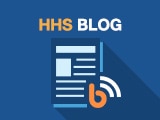Release of HHS Mental Health and Substance Use Disorder Parity Action Plan
Today, HHS released the Mental Health and Substance Use Disorder Parity Action Plan, required by Section 13002 of the 21st Century Cures Act. The Action Plan includes recent and planned actions from HHS, the Department of Labor, and the Department of the Treasury related to ongoing implementation of the Paul Wellstone and Pete Domenici Mental Health Parity and Addiction Equity Act of 2008 (MHPAEA) based on written comments from stakeholders and input from a public listening session held in July 2017.
MHPAEA applies to employment–based large group health plans and health insurance issuers choosing to provide mental health and substance use disorder coverage and requires that limitations on such benefits not be more restrictive than limitations on medical and surgical benefits.
Almost one in five Americans experienced a diagnosable mental illness in 20161, mental illness and nearly one-quarter of them had a serious mental illness that interferes with performing daily activities. The prevalence of substance use disorders (SUDs) has increased in the previous two decades, with estimates suggesting that over 20 million adults suffered from an alcohol or substance use disorder in 2016. In particular, the rate of opioid use disorder has been on the rise, with more than 2 million Americans now suffering from opioid use disorder, driving historically high rates of drug overdose deaths. SUD and mental illness often intersect: Almost one-half of those adults, more than 8 million Americans, had both an SUD and a diagnosable mental illness.2
Today’s announcement will help ensure these Americans can access mental health and SUD treatment. In particular, it aligns with HHS’s five-pillar strategy for addressing the opioid crisis, which includes helping people access evidence-based treatment. The President’s Commission on Combatting Drug Addiction and the Opioid Crisis also recommended full enforcement of MHPAEA.
Since the enactment of MHPAEA, HHS has been committed to enforcing the law, promoting compliance, assisting consumers, and conducting investigations of non-compliance. As one example, HHS recently updated its online portal to help individuals who have questions or are having trouble accessing their mental health or SUD treatment. This portal is available at https://www.hhs.gov/parity
HHS will continue to enforce parity laws and help consumers access mental health and SUD treatment services. More information on how HHS is addressing the opioid crisis can be found here: https://www.hhs.gov/opioids/.
1 Substance Abuse and Mental Health Services Administration (SAMHSA). Mental and substance use disorders. http://www.samhsa.gov/disorders. Published 2016. Updated March 3. Accessed August 23, 2016.
2 Center for Behavioral Health Statistics and Quality. Behavioral health trends in the United States: Results from the 2014 National Survey on Drug Use and Health (HHS Publication No. SMA 15-4927, NSDUH Series H-50). http://www.samhsa.gov/data/sites/default/files/NSDUH-FRR1-2014/NSDUH-FRR1-2014.pdf. Published 2015. Accessed August 23, 2016.
Researchers search for disease markers linked diverse population
Fighting the Opioid Crisis Before and After Hours

